Neutering Dogs. In Depth
Neutering Dogs an In Depth Analysis
Stan Rawlinson a Doglistener explains what problems can be caused by Neutering your dogs and why you must read this before you decide on Spaying and Castration plus the use of Suprelorin

I began studying and reporting on the effects of early neutering (the generic term for both spaying and castration) after many years of observations and record keeping.
These culminated in a number of articles on the outcomes caused by these major operations.
I still get many requests for further information, regarding when, or even if, you should get your dogs “Neutered”.
Therefore this article is meant to be a guide as to what to do. And in what circumstances would neutering be useful and beneficial.
It points to when it may or may not be in the dog’s best interest to be neutered and also explains the medical procedures and what hormones are removed or reduced because of neutering.
It is intentionally in depth, as I felt that it would hopefully answer many concerns people have about neutering their pets. I question the stance of the vociferous lobby that believes if it moves neuter it.
There are some serious concerns, regarding the Veterinary profession’s position. Especially the fact that my clients are always complaining about how hard their Vets push for an early neutering procedure.
The Veterinarians state it is always in the dog’s best interest. I think It would be far more convinced if it was not so financially lucrative for them. They state that there has been no long-term clinical work done that shows there are any negative behavioural changes to the dogs. In fact, they say it is always positive to neuter.
This is simply not true! This is an intensive study of over 7,500 dogs on (2) Non-Reproductive Effects of Spaying and Neutering on Behaviour in Dogs This is a quantitative study, that used the Canine Behavioural Assessment and Research Questionnaire © to investigate the impact of spaying/castration in various dog populations.
C-BARQ is a reliable, standardised method for evaluating and screening dogs for the presence and severity of behavioural problems. These included a random sample of 1,552 dogs belonging to 11 common breeds and over 6,000 dogs of various breeds recruited via an online survey.
The results are both shocking and surprising, (though not to me), and show that the majority of our veterinary profession appears not to understand the outcomes of the very procedures they recommend for our dog’s behaviour.
In nearly all cases aggression increased with neutering in both male and female dogs. The exact opposite of what we have regularly been told Vets and so-called professionals. Read this. It is a vet that now deeply regrets performing and recommending (1) Early Neutering.
I am not Vet and I am not clinically trained. This article was created because of my observational concerns, plus research and keeping records that indicated that the majority of my clients had been neutered, many far too early by Vets who have clearly not kept up with peer-reviewed scientific knowledge.
Dr Becker noticed many of her canine patients were developing endocrine-related disorders. After a conversation with an expert in the field of veterinary endocrinology, Dr Becker realised her practice of insisting on early spays and neuters for every dog patient, had left many of them with serious health problems.

Hormones:
All mammals are born with various hormones. Three of the most important ones are Oestrogen, Progesterone, and Testosterone.
All dogs male and female have these hormones. by what degree each hormone is present determines the sex of the animal.
These are commonly called sex hormones and are related to reproduction. However, they also play a very important role in other aspects of the animal’s well being.
They allow and create physical, social, and behavioural maturity. Without these hormones the dogs, if immature when the operation is carried out, may not behaviourally and physically reach full maturity. Both physiological and psychological problems may occur because of these early invasive operations.
During my studies, I started noticing frustration, lack of attention, inability to concentrate, and puppy-like behaviour, these traits were far more prevalent in dogs that were neutered and spayed at a younger age, than those who were allowed to mature naturally before neutering.
I call this (paedomorphic behaviour). In other words, dogs retain perpetual puppy-like characteristics. I also observed that bitches spayed too early may be far more interesting to intact males; which may cause the female to become aggressive and protective of this unwanted attention in adulthood.
Despite popular belief, spaying does not calm a female dog down. It may help to calm certain behaviour’s in males, but definitely not females. I think it is important to understand that I am not totally against neutering. Though I do have some very grave concerns even in adult dogs.
My major issues are focused on early neutering before the dogs are both physically and mentally mature. That and the fact that it is sometimes recommended for the wrong reasons for the wrong dogs, at the wrong time. Not all dogs benefit from neutering, in fact, many may suffer negative reactions including increased aggression and psychological disorders. In Sweden, it is illegal to neuter Dogs at any age, unless for medical reasons.
Vets used to have a creed “primum non nocere” or “first do no harm”. Then why are they neutering dogs as young as six weeks of age? Dr Robert Foley and Dr Michael Ferber both well-respected Vets, firmly believe that paediatric neutering is greatly harming our pets. They are called (1) The Angry Vets. Therefore vets doing this procedure are surely not following their professional creed
Recent research published by the BMC (Biomed Centre) has uncovered some startling statistics. (10) BMC Veterinary Research Which shows immutable scientific proof of the harm that neutering is causing to all our dogs. This is just one graph of their finding.
BioMed Central was founded in 2000 as part of the Current Science Group (now Science Navigation Group, SNG. In November 2008, BioMed Central became an official supporting organisation of Healthcare Information For All. Many thousands of dogs were involved in this research
Disease | Intact females | Neutered females | Intact males | Neutered males | Percent in study |
|---|---|---|---|---|---|
Atopic Dermatitis (ATOP) | 83 | 745 | 169 | 641 | 1.82 |
Autoimmune Hemolytic Anemia (AIHA) | 38 | 256 | 38 | 176 | 0.56 |
Canine Myasthenia Gravis (CMG) | 11 | 49 | 6 | 38 | 0.12 |
Colitis (COL) | 61 | 267 | 109 | 256 | 0.77 |
Hypoadrenocorticism (ADD) | 25 | 147 | 20 | 113 | 0.34 |
Hypothyroidism (HYPO) | 62 | 750 | 210 | 678 | 1.89 |
Immune-Mediated Polyarthritis (IMPA) | 24 | 170 | 56 | 141 | 0.43 |
Immune-Mediated Thrombocytopenia (ITP) | 21 | 262 | 29 | 151 | 0.51 |
Inflammatory Bowel Disease (IBD) | 20 | 189 | 46 | 167 | 0.47 |
Lupus Erythematosus (LUP) | 6 | 74 | 30 | 47 | 0.17 |
Pemphigus Complex (PEMC) | 13 | 71 | 11 | 55 | 0.17 |
Pyometra (PYO) | 176 | 27 | NA | NA | 0.44 |
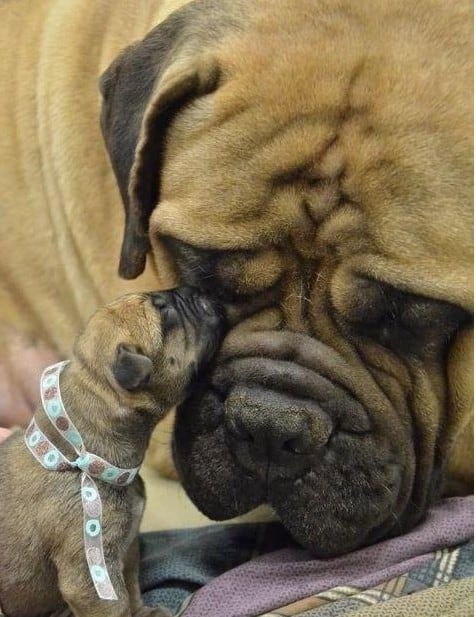
Will Neutering Stop Over Population?
Sweden and other Nordic countries generally do not have a dog roaming problem.
They also do not have dog overpopulation and lots of rescue dogs.
Yet we are constantly told by the neuter everything crowd, that it is the un-neutered dogs that are causing the problem.
The majority of domestic dogs in Sweden are not neutered.
Sweden has fairly strict animal breeding laws, and therefore they have minimal problems with pet overpopulation.
In my opinion, the top three contributors to the problem (besides lack of education ) is:
1. Pet Stores
2. Backstreet Breeders.
3. Puppy Farms
In Sweden these problems are not a major issue:
1. You are not allowed to sell cats or dogs in pet stores. That is left to certified breeders ONLY.
That way the spur-of-the-moment purchases of dogs and cats are eliminated. It also means that the buyer is scrutinized before being allowed to buy any pet.
2. Only CERTIFIED breeders are allowed to breed. There are extremely strict laws with hefty fines if not followed, regarding dog breeding.
The breeder is financially responsible for the health of the pup for its first 3 years. That completely eliminates backyard breeders and puppy farms that breed for profit, not health. Under these circumstances, It would no longer be financially viable or feasible to breed.
We do not have a roaming dog problem in the UK. In fact, many of the rescues rehomed in the UK are coming from places like Romania, Thailand, Greece, Ireland, Poland and parts of Africa and the Asian sub-continent.
I believe that places like the UK and America should take note. Instead of mutilating tiny puppies, and affecting the behaviour and health of their immature pets, they should demand stronger breeding laws.

I cannot tell you how many times I have heard people say “Oh just have it done that will sort all the problems out” This statement could not be further from the truth.
Neutering is a very invasive operation and can lead to numerous physical and mental complications.
It can also considerably worsen the behavioural problem you were attempting to overcome, especially if the dogs have aggression related to fear.
Once castration and spaying have been done it is irreversible. You cannot put back in what you have removed.
I have spoken to numerous people who bitterly regret having the operation done. Unfortunately, by that time, it is too late.
This is especially the case when you have a fearful or timid dog. Spaying or castrating a dog like this can often make the fear behaviour’s considerably worse.
The sex hormones and especially testosterone and oestrogen, play a major part in giving dogs an element of calmness, confidence, and well-being. I have seen male dogs that have previously been non-aggressive, suddenly start to attack other dogs and people. These attacks are normally aimed at both male and female dogs.
Some male and female dogs become withdrawn and terrified of almost everything. Fearful of sounds and movements and sometimes people and dogs they have known and trusted. I treated a female St Bernard. dog, It had to be brought out to me on two leads and a muzzle, with two people hanging on.It. She had turned so aggressive to both dogs and humans within five days of being spayed.
It had also started attacking and bullying a Poodle, that it had lived with since it was a pup. Fortunately, I managed to work with the dog and it is far better now. I have also had a lot of success with many other females that have reacted badly to spaying.
I actually see quite a few of these aggressive behaviours post spaying each year. Having said that I do deal a lot with aggression cases. It is, therefore, possible it’s not as common as it may appear, but it does happen regularly. The problem as always is finding a behaviourist who actually understands what has happened, and is able to work with each individual dog, as one size does not fit all. Unfortunately, they are not easy to find.
Despite what the so-called experts say, all behavioural problems do not stem from pack mentality there are many other variables. These one-trick ponies would have us believe, that all we have to do is ignore the dog when we come in, eat before it, and then everything is miraculously cured. Absolute garbage, please read the (2) Alpha Myth
Operation Requirements
Females: The surgeon will make an incision in the middle of the abdomen to locate the reproductive tract, and remove the ovaries and uterus. The medical term for the operation is ovariohysterectomy (OHE). This procedure is carried out under a general anaesthetic. The operation normally requires the removal of the uterine body and horns, the ovaries, and the tubes connecting the ovaries to the horns.
A dog’s uterus is a Y-shaped organ with two horns and a body. The procedure may take longer for larger or overweight dogs. Do not bathe your dog or allow swimming for the first ten days after surgery or until after the stitches have been removed.
Males: Both testicles are removed through a skin incision in front of the scrotum. The scrotal sack is left in place, but this often shrinks given a little time. This procedure is also carried out under a general anaesthetic. The operation itself normally takes between 30-40 minutes. Stitches may be used that are dissoluble, other vets use non-dissoluble sutures and these need to be removed about 10 days after the operation. No bathing or swimming until stitches are removed, therefore it may be advantageous to bathe the dogs both male and female before the operation. The medical name for the procedure is orchiectomy.

Misdiagnosis
The concern I have is the one size fits all scenario, that suggests that neutering is the answer to every behavioural problem, I can promise you It isn’t.
There are many reasons for a dog’s behavioural issues. Hormones may play a part, but not in every case.
For instance, if you are hoping to stop aggression and that aggression is fear-based then neutering may often make the dog more fearful therefore more aggressive.
Whatever the apparent behavioural problem, many people will suggest neutering, despite the fact that the dog may be suffering from fear, anxiety, a medical condition, or other non-hormonal reasons for the behaviour.
Neutering can actually have seriously detrimental effects, rather than the positive outcome that is being hoped for.
What Are Sex Hormones
Progesterone is a hormone that the body produces which helps to regulate a female’s monthly cycle. Men also produce a small amount of progesterone, but it is less important to sexual maturity than testosterone. Progesterone also aids immunity and can reduce inflammation and swelling, it also helps regulate the thyroid gland, and keeps blood-clotting levels at normal values.
It has an impact on keeping bones strong, produces collagen, and helps keep nerves functioning, It can be said to keep people young. Low progesterone levels also decrease the body’s ability to create new bone cells. Hence the problems in old age of Osteoporosis in females, that have gone through what is euphemistically known as “The Change”
Oestrogen: This hormone is considered to play a significant role in females mental and physical health. There are oestrogen receptors in your bones, brain, blood vessels, and central nervous system. Oestrogen seems to affect lots of different parts of the body and is also important to mood and well-being. Doctors now believe that oestrogen may help keep bones strong and healthy. While estrogens are present in both male and females, it is found in females in significantly higher quantities.
Testosterone: This is a hormone from the androgen group. In mammals, testosterone is secreted in the testicles of males and also to a far lesser extent in the ovaries of females. And is the principal male sex hormone.
In male dogs, testosterone plays a key role in health and well-being, as well as preventing bone problems. Certain behavioural problems are driven by testosterone, namely roaming, inter-dog aggression, this would be normally against other intact males, and certain sexual behaviour’s including marking, humping and mounting plus of course mating. Castration may not solve all or even any of the above problems though it certainly can help. In some cases, it actually could have a detrimental effect? All three of these hormones are quite vital to maturity in all mammals’, not just dogs.
Progesterone: receptors are found in brain cells, in nerve sheaths, and in bone cells in both male and female dogs. That is a strong indicator that progesterone is involved in their function. It also appears to be involved in a range of other biological activities. Therefore, neutering before both physical and psychological maturity may have a real impact on the health and well-being of your dog.

When Should You Neuter?
Females: If you own a very small dog then you could possibly neuter after two seasons.
In medium dogs two or more seasons would be far more prudent, large dogs three or four seasons and giant breeds at least four seasons unless medical needs suggest otherwise.
If it were my dog even with small dogs, I would never spay until the dog has had at least two seasons.
And only then if it was for medical or behavioural reasons.
You then need to wait three months after the last season before spaying, unless medical conditions require otherwise.
Males: This is less clear-cut as they do not have a season to calculate possible maturity.
You need to look at breed and size, and any visual clues such as leg cocking.
A large dog such as a Great Dane should not really be neutered before thirty-six months.
The larger the breed then the later they mature. therefore, a German Shepherd size dog would be about 17 months, a Collie 15 months, a Miniature Yorkshire Terrier about 10/12 months.
Unless of course, there are medical or serious behavioural issues to take into consideration. These are all approximated and each dog will vary. Look for leg cocking in the smaller dogs.
When this is fully operational, in other words marking quite high rather than the dismal attempt where they almost fall over then wait a month then you can consider neutering.
What Other Problems May Occur
These are quite complex therefore I am going to give an overview and some snippets, and then direct you to the well-known Vets and experts that make these observations
Neutering at any time can have both positive and detrimental effects. Neutering early, in my opinion, will always cause detrimental effects. What you must take into account is that neutering before maturity may often cause joint, bone and ligament problems.
Have you heard of ACL it means Anterior Cruciate Ligament Which is the ligament that stabilises the knees? This is one of the most common orthopaedic injuries that are seen in today’s dogs.
What is the main cause? It was long believed that it was a sudden movement that caused this problem. This has now been disproved. Please read the (3) Effects of Neutering on Bones and Joints A small portion of dogs suffers torn cruciate as an injury caused by exertion. The agility, working gundogs and heelwork to music type dogs. However, it is now accepted that the vast majority of the dogs that suffer from this debilitating injury have been neutered.
ACL Anterior Cruciate Ligament and HD Hip Dysplasia are on the increase new(4) Research have now shown that dogs over 4 years old that are spayed or castrated are considerably more likely to suffer cruciate tears and hip dysplasia than dogs that are unneutered.
Early neutering removes vital hormones, that will result in spindly legs, narrow chests, and thin skulls. It may also increase the risk of obesity and cause paedomorphic behaviour, lack of concentration, and puppy-like behaviour for most if not all of the dog’s life. I can also increase the incidence of various cancers.
Neutering when an adult may help certain behaviour’s and will stop certain medical conditions. However, it will also increase the chances of other medical conditions occurring such as prostate cancer, thyroid dysfunction, and bone cancer. Obesity is also a problem as neutering will change your dog’s metabolism making it more sluggish.
Below are snippets from learned and peer-reviewed articles and papers, from some of the most well-respected professionals in the Pet Industry
CLICK ON THE VETS AND EXPERTS NAMES TO GO TO THE FULL ARTICLE
Castration at an early age will cause the dog to become overly tall, as the growth plates in the long bones will not close at the appropriate time; additionally, the dog will lack the breadth of the chest. The combination of these two factors sets the stage for your dog to have painful orthopaedic problems.”
“The statement that your dog will not automatically gain weight is rubbish. Removing sexual hormones will change his metabolism and make your dog more sluggish, resulting almost inevitably in weight gain. Also, muscle tone will decline after castration, and the classic result of this is a fat dog in poor muscle tone that ends up having a cruciate ligament rupture in the knee”
“Spayed females have 4 times greater risk of cardiac hemangiosarcomas, and neutered males also show a significantly increased risk for this cancer compared to intact ones.”
“Another cancer Dr Hahn discusses that deserves mention is prostate cancer because a lot of people erroneously believe that castration prevents this. In reality, it does not. In fact, castrated dogs have up to 4 times greater risk of developing prostate cancer than intact animals.
At the same time, spayed or neutered dogs have a 1.5 to 3 times greater chance of developing bladder cancer. Because of this, rectal examinations and abdominal palpation should always be part of a routine veterinary physical examination.”
“The link between sterilization and osteosarcoma (i.e. bone cancer) is also troubling: Spayed and neutered animals are twice as likely to develop this cancer. Those spayed or castrated before their first birthdays had a roughly 1 in 4-lifetime risk for osteosarcoma and were significantly more likely to develop a tumour than intact dogs.”
Dr Kevin Hahn (Veterinary Oncologist)
Research since 1990 has shown that spay and neuter surgeries may have specific drawbacks as well as benefits. Dogs neutered before puberty tend to have longer legs, flatter chests, and narrower skulls than intact dogs of their breeds because the hormones that regulate sexual activity also interact with hormones that guide the growth of muscles, bones, and tendons.
These physical differences can place more stress on joints and can cause problems for active dogs, especially those in training for agility and those that work in physically stressful jobs.
Additional drawbacks specific to spay surgery include increased incidence of bladder incontinence, triple the frequency of thyroid disease, and a higher risk of some cancers, joint problems, obesity and adverse reactions to vaccinations.
Laura J. Sanborn, M.S. of Rutgers University,
A recent report by the American Kennel Club Canine Health Foundation reported significantly more behavioural problems in spayed and neutered bitches and dogs which. The most commonly observed behavioural problem in spayed females was fearful behaviour and the most common problem in males was aggression.
A retrospective study of cardiac tumours in dogs showed that there were 5 times greater risk of hemangiosarcoma, one of the three most common cancers in dogs, in spayed bitches than intact bitches and 2.4 times greater risk of hemangiosarcoma in neutered dogs as compared to intact males.
A study of 3218 dogs demonstrated that dogs that were neutered before a year of age had a significantly increased chance of developing bone cancer.(8) A separate study showed that neutered dogs had a two-fold higher risk of developing bone cancer. Despite the common belief that neutering dogs help prevent prostate cancer, at least one study suggests that neutering provides no benefit.
There certainly is evidence of a slightly increased risk of mammary cancer in female dogs after one heat cycle, and for increased risk with each subsequent heat. While about 30 % of mammary cancers are malignant, as in humans, when caught and surgically removed early the prognosis is very good.,
Chris Zink DVM, PhD, DACVP
But by far the most startling news to surface this year is the result of a study that shows that keeping ovaries to the age of six years or later is associated with a greater than 30% increase of lifespan in female Rottweilers. (4) (7) Similar studies in humans reinforce this finding. (5),(6)
This is not just Rottweiler, of course, it also relates to all female dogs and appears to be ignored by the spay and neuter crowd that bays for anyone’s blood who suggest otherwise.
These people often have no idea what hormones are affected or how physically and mentally it affects the dogs they often condemn to years of sometimes pain and mental anguish. Do they imagine that these hormones are an additional extra like a Sat Nav on a car?
Neutering Male Dogs The Upside:
eliminates the small risk (probably <1%) of dying from testicular cancer
reduces the risk of non-cancerous prostate disorders
reduces the risk of perianal fistulas
may possibly reduce the risk of diabetes (data inconclusive)
Neutering Male Dogs The Downside:
if done before maturity, increases the risk of osteosarcoma (bone cancer) by a factor of 3.8; this is a common cancer in medium/large and larger breeds with a poor prognosis
Increases the risk of cardiac hemangiosarcoma by a factor of 1.6; this is a common cancer and major cause of death in some breeds
Triples the risk of hypothyroidism increases the risk of geriatric cognitive impairment
Triples the risk of obesity and with it many of the associated health problems
Quadruples the small risk (<0.6%) of prostate cancer
Doubles the small risk (<1%) of urinary tract cancers
Increases the risk of orthopaedic disorders
Increases the risk of adverse reactions to vaccinations
Increases the risk of fearfulness, noise phobias and aggression.
For female dogs, the situation is more complex. The number of health benefits associated with spaying may exceed the associated health problems in some (not all) cases.
On balance, whether spaying improves the odds of overall good health or degrades them probably depends on the age of the female dog and the relative risk of various diseases in the different breeds.
Spaying Females. The Upside
if done before 2.5 years of age, greatly reduces the risk of mammary tumours, the most common malignant tumours in female dogs
• nearly eliminates the risk of pyometra, which otherwise would affect about 23% of intact female dogs; pyometra kills about 1% of an intact female dog
• reduces the risk of perianal fistulas
• removes the very small risk (0.5%) from uterine, cervical, and ovarian tumours
Spaying Females. The Downside
• if done before 1 year of age, significantly increases the risk of osteosarcoma (bone cancer); this is often a common cancer in larger breeds with a poor prognosis.
• increases the risk of splenic hemangiosarcoma by a factor of 2.2 and cardiac hemangiosarcoma by a factor of 5; this is also a common cancer and major cause of death in some breeds.
• triples the risk of hypothyroidism.
• increases the risk of obesity by a factor of 1.6-2, a common health problem in dogs with many associated health problems.
• causes urinary “spay incontinence” in 4-20% of female dogs.
• increases the risk of persistent or recurring urinary tract infections by a factor of 3-4
• increases the risk of recessed vulva, vaginal dermatitis, and vaginitis, especially for female dogs spayed before puberty.
• doubles the small risk (<1%) of urinary tract tumours.
• increases the risk of orthopaedic disorders
• increases the risk of adverse reactions to vaccinations
Laura J. Sanborn, M.S. of Rutgers University,
Why don’t we use a Vasectomy for male dogs and a Hysterectomy for female dogs? allowing the testicles and the ovaries to remain, thereby retaining these three vital hormones. This is such a simpler procedure, with the required result of removing the ability to conceive for females. Hysterectomy does not stop seasons, but if the cervix is removed at the same time it prevents pyometra, pregnancy, and bleeding during seasons.
A Vasectomy stops the male dogs from being able to create sperm. Surely this is a far better outcome than Castration and Ovariohysterectomy? Surely it is a no-brainer, so why are Vets and The BVA not recommending this. Especially in the light of the intensive study and research of over 7,500 dogs showing that in almost every case the neutered dogs were the more reactive, moody and aggressive. The very opposite of what we are told is the normal outcome.

Further Medical Research
Those who support early juvenile spay and castration are not quoting the percentages of testicular cancer in un-neutered dogs.
They don’t tell you that the rate is only about 7%, and that’s in dogs that are never neutered.
They also don’t tell you that it is easy to manage and to prevent and cure after maturity.
Behavioural studies show that sterilization increases fearfulness, noise phobias, and aggression.
Other well-documented adverse health effects of de-sexing include increased risk of bone cancer, hemangiosarcoma, hypothyroidism, and cognitive dysfunction in older pets.
Sterilization confers increased susceptibility to infectious disease, and also a higher incidence of adverse reactions to vaccines.
Is There An Alternative to Castration?
Suprelorin is a new contraceptive implant for male dogs which offers the advantages of castration without surgery. What has been used in the past was Tardak, which last about three to four weeks and indicates if neutering would be beneficial.
It appears Suprelorin (a fairly new breakthrough) is far more effective and longer lasting. It slowly releases deslorelin, a hormone similar to those used to treat human prostate cancer. The low, continuous dose of deslorelin prevents the production of sex hormones. The biocompatible implant disappears over a period of time and does not have to be removed.
Suprelorin can be used as a ‘road-test’ to mimic the effect that would be seen without undergoing permanent and irreversible surgery. If a favourable response is seen castration can be carried out or Suprelorin could possibly be continued.
Pre-Pubertal’s or Juveniles: Because suprelorin/deslorelin suppresses gonadal steroids, its use may delay epiphyseal closure of the long bones, resulting in taller individuals, similar to the effects of prepubertal spaying and neutering in domestic dogs and cats.
So be careful regarding the use of this when the dogs are still physically immature. The other downside is that it should not be used indefinitely, as it suppresses all testosterone, unlike castration which only suppresses something like 90% the other 10% is produced through the Adrenal and possibly the thyroid gland. However further study must be done to see if there are adverse effects by removing completely, those hormones produced elsewhere in the body as a result of neutering.
This 10% is important as the bones and other areas of the body could become affected. What About Females: At present, there is no Suprelorin specifically for female dogs, though tests and experiments are being carried out. A product could be available for the females in time.
Stan Rawlinson April 2010
updated regularly last update November 2018
I have written a number of other articles regarding spay-neuter Please see the full articles. One alludes to the practice of the RSPCA and other welfare organisations, and some breeders, spaying and castrating dogs at six weeks of age. In my opinion, this is a national disgrace and the Vets that offer this service should look at the known facts of early neutering and remember that we should all use the adage “First Do No Harm”
(1) Early Neutering.
(2) Alpha Myth
(3) Effects of Neutering on Bones and Joints
(4) Research
Further articles:
(1) https://www.doglistener.co.uk/neutering/rspca.shtml
(2) https://www.doglistener.co.uk/neutering/spaying_neutering.shtml
(3) https://www.doglistener.co.uk/overview-problems-spaying-and-castrating-dogs
Further information and acknowledgements
(1) The Angry Vets.
(2) Non-Reproductive Effects on Spaying and Neutering on Behaviour in Dogs
Clinical and pathologic features of prostatic adenocarcinoma in sexually intact and castrated dogs: 31 cases (1970-1987) Ford W. Bell, DVM; Jeffery S. Klausner, DVM, MS; David W. Hayden, DVM, PhD; Daniel A. Feeney, DVM, MS; Shirley D. Johnston, DVM, PhD; Dept. of Small Animal Clinical Sci; College of Veterinary Medicine; University of Minnesota; 1352 Boyd Ave.; St. Paul, MN 55108
“Castrated dogs had 2.38 times greater risk of developing prostatic cancer than intact dogs when compared with the hospital population.”
Laura J. Sanborn, M.S. of Rutgers University, Long-Term Health Risks and Benefits Associated with Spay / Neuter in Dogs
3. Prostatic disorders in the dog. Anim Reprod Sci 60-61[]:405-15 2000 Jul 2 36 Refs Johnston SD, Kamolpatana K, Root-Kustritz MV, Johnston GR “Two studies suggest that risk of prostatic adenocarcinoma is increased in neutered, compared to intact male dogs.”
4 Zink, Christine, DVM, PhD, DACVP
“Early Spay-Neuter Considerations for the Canine Athlete”; 2005
http://www.thedogplace.org/Veterinary/0603-SpayNeuter_Zink.asp
5. Nolen, R. Scott “Rottweiler Study Links Ovaries With Exceptional Longevity”
JAVMA March 2010 avma.org/onlnews/javma/mar10/100301g.asp
6. Waters, David J., DVM, PhD, Diplomate ACVS “A Healthier Respect for Ovaries”
gpmcf.org/respectovaries.html
7. Retaining ovaries may be a key to prolonged life in women and dogs”; DVM Newsmagazine; Dec 5, 2009. veterinarynews.dvm360.com/dvm/ArticleStandard/Article/detail/646838
8. http://www.thedogplace.org/Veterinary/Spay-Neuter-1101_Coates.asp
9. Ron Hines DVM PhD for his information on Cruciate Ligaments and his in-depth article on Early Neutering
10. BMC Veterinary Research Scientific proof of the harm that neutering is causing to our dogs
Stan Rawlinson a Doglistener explains what problems can be caused by Neutering your dogs and why you must read this before you decide on Spaying and Castration plus the use of Suprelorin
Neutering Dogs an In Depth AnalysisIncluding the use of Suprelorin dog contraceptive Neutering Spaying and Castration.The surgical removal of the reproductive organs in both male and female dogs

I began studying and reporting on the effects of early neutering (the generic term for both spaying and castration) after many years of observations and record keeping.
These culminated in a number of articles on the outcomes caused by these major operations.
I still get many requests for further information, regarding when, or even if, you should get your dogs “Neutered”.
Therefore this article is meant to be a guide as to what to do. And in what circumstances would neutering be useful and beneficial.
It also points to when it may or may not be in the dog’s best interest to be neutered.
It also explains the medical procedures and what hormones are removed or reduced because of neutering.
It is intentionally in depth, as I felt that it would hopefully answer many concerns people have about neutering their pets.
And to question the stance of the vociferous lobby that believes if it moves neuter it.
I also have some concerns, regarding the Veterinary profession’s position. Especially the fact that my clients are always complaining about how hard their Vets push for an early neutering procedure.
The Veterinarians state it is always in the dog’s best interest. I think It would be far more convinced if it was not so financially lucrative for them.
They state that there has been no long-term clinical work done that shows there are any negative behavioural changes to the dogs. In fact, they say it is always positive to neuter.
This is simply not true! This is an intensive study of over 7,500 dogs on (2) Non-Reproductive Effects of Spaying and Neutering on Behaviour in Dogs This is a quantitative study, that used the Canine Behavioural Assessment and Research Questionnaire © to investigate the impact of spaying/castration in various dog populations.
C-BARQ is a reliable, standardised method for evaluating and screening dogs for the presence and severity of behavioural problems. These included a random sample of 1,552 dogs belonging to 11 common breeds and over 6,000 dogs of various breeds recruited via an online survey.
The results are both shocking and surprising, (though not to me), and show that the majority of our veterinary profession appears not to understand the outcomes of the very procedures they recommend for our dog’s behaviour.
In nearly all cases aggression increased with neutering in both male and female dogs. The exact opposite of what we have regularly been told Vets and so-called professionals.
Read this. It is a vet that now deeply regrets performing and recommending (1) Early Neutering.
I am not Vet and i am not clinically trained in any way. This article was created because of m observational concerns, plus research and keeping records that indicated that the majority of my clients had been neutered, many far too early by Vets who have clearly not kept up with peer-reviewed scientific knowledge.
Dr Becker noticed many of her canine patients were developing endocrine-related disorders. After a conversation with an expert in the field of veterinary endocrinology, Dr Becker realised her practice of insisting on early spays and neuters for every dog patient, had left many of them with serious health problems.

Hormones:
All mammals are born with various hormones. Three of the most important ones are Oestrogen, Progesterone, and Testosterone.
All dogs male and female have these hormones. by what degree each hormone is present determines the sex of the animal.
These are commonly called sex hormones and are related to reproduction.
However, they also play a very important role in other aspects of the animal’s well being.
They allow and create physical, social, and behavioural maturity. Without these hormones the dogs, if immature when the operation is carried out, may not behaviourally and physically reach full maturity. Both physiological and psychological problems may occur because of these early invasive operations.
During my studies, I started noticing frustration, lack of attention, inability to concentrate, and puppy-like behaviour, these traits were far more prevalent in dogs that were neutered and spayed at a younger age, than those who were allowed to mature naturally before neutering.
I call this (paedomorphic behaviour). In other words, dogs that retain perpetual puppy like characteristics. I also observed that bitches spayed too early may be far more interesting to intact males; which may cause the female to become aggressive and protective of this unwanted attention in adulthood.
Despite popular belief, spaying does not calm a female dog down. It may help to calm certain behaviour’s in males, but definitely not females. I think it is important to understand that I am not totally against neutering. Though I do have some very grave concerns even in adult dogs.
My major issues are focused on early neutering before the dogs are both physically and mentally mature. That and the fact that it is sometimes recommended for the wrong reasons for the wrong dogs, at the wrong time. Not all dogs benefit from neutering, in fact, many may suffer negative reactions including increased aggression and psychological disorders. In Sweden, it is illegal to neuter Dogs at any age, unless for medical reasons.
Vets have a creed “primum non nocere” or “first do no harm”. Every veterinarian swears an oath to this important creed. Then why are they neutering dogs as young as six weeks of age? Dr Robert Foley and Dr Michael Ferber both well-respected Vets, firmly believe that paediatric neutering is greatly harming our pets. They are called (1) The Angry Vets. Therefore vets doing this procedure are surely not following their professions creed “primum non nocere”
Recent research published by the BMC (Biomed Centre) has uncovered some startling statistics. (10) BMC Veterinary Research Which shows immutable scientific proof of the harm that neutering is causing to all our dogs. This is just one graph of their finding.
BioMed Central was founded in 2000 as part of the Current Science Group (now Science Navigation Group, SNG. In November 2008, BioMed Central became an official supporting organisation of Healthcare Information For All. Many thousands of dogs were involved in this research
Disease | Intact females | Neutered females | Intact males | Neutered males | Percent in study |
|---|---|---|---|---|---|
Atopic Dermatitis (ATOP) | 83 | 745 | 169 | 641 | 1.82 |
Autoimmune Hemolytic Anemia (AIHA) | 38 | 256 | 38 | 176 | 0.56 |
Canine Myasthenia Gravis (CMG) | 11 | 49 | 6 | 38 | 0.12 |
Colitis (COL) | 61 | 267 | 109 | 256 | 0.77 |
Hypoadrenocorticism (ADD) | 25 | 147 | 20 | 113 | 0.34 |
Hypothyroidism (HYPO) | 62 | 750 | 210 | 678 | 1.89 |
Immune-Mediated Polyarthritis (IMPA) | 24 | 170 | 56 | 141 | 0.43 |
Immune-Mediated Thrombocytopenia (ITP) | 21 | 262 | 29 | 151 | 0.51 |
Inflammatory Bowel Disease (IBD) | 20 | 189 | 46 | 167 | 0.47 |
Lupus Erythematosus (LUP) | 6 | 74 | 30 | 47 | 0.17 |
Pemphigus Complex (PEMC) | 13 | 71 | 11 | 55 | 0.17 |
Pyometra (PYO) | 176 | 27 | NA | NA | 0.44 |

Will Neutering Stop Over Population?
Sweden and other Nordic countries generally do not have a dog roaming problem.
They also do not have dog overpopulation and lots of rescue dogs.
Yet we are constantly told by the neuter everything crowd, that it is the un-neutered dogs that are causing the problem.
The majority of domestic dogs in Sweden are not neutered.
Sweden has fairly strict animal breeding laws, and therefore they have minimal problems with pet overpopulation.
In my opinion, the top three contributors to the problem (besides lack of education ) is:
1. Pet Stores
2. Backstreet Breeders.
3. Puppy Farms
In Sweden these problems are not a major issue:
1. You are not allowed to sell cats or dogs in pet stores. That is left to certified breeders ONLY.
That way the spur-of-the-moment purchases of dogs and cats are eliminated. It also means that the buyer is scrutinized before being allowed to buy any pet.
2. Only CERTIFIED breeders are allowed to breed. There are extremely strict laws with hefty fines if not followed, regarding dog breeding.
The breeder is financially responsible for the health of the pup for its first 3 years. That completely eliminates backyard breeders and puppy farms that breed for profit, not health. Under these circumstances, It would no longer be financially viable or feasible to breed.
We do not have a roaming dog problem in the UK. In fact, many of the rescues rehomed in the UK are coming from places like Romania, Thailand, Greece, Ireland, Poland and parts of Africa and the Asian sub-continent.
I believe that places like the UK and America should take note. Instead of mutilating tiny puppies, and affecting the behaviour and health of their immature pets, they should demand stronger breeding laws.

I cannot tell you how many times I have heard people say “Oh just have it done that will sort all the problems out” This statement could not be further from the truth.
Neutering is a very invasive operation and can lead to numerous physical and mental complications.
It can also considerably worsen the behavioural problem you were attempting to overcome, especially if the dogs have aggression related to fear.
Once castration and spaying have been done it is irreversible. You cannot put back in what you have removed.
I have spoken to numerous people who bitterly regret having the operation done. Unfortunately, by that time, it is too late.
This is especially the case when you have a fearful or timid dog. Spaying or castrating a dog like this can often make the fear behaviour’s considerably worse.
The sex hormones and especially testosterone and oestrogen, play a major part in giving dogs an element of calmness, confidence, and well-being. I have seen male dogs that have previously been non-aggressive, suddenly start to attack other dogs and people. These attacks are normally aimed at both male and female dogs.
Some male and female dogs become withdrawn and terrified of almost everything. Fearful of sounds and movements and sometimes people and dogs they have known and trusted. I treated a female St Bernard. dog, It had to be brought out to me on two leads and a muzzle, with two people hanging on.It. She had turned so aggressive to both dogs and humans within five days of being spayed.
It had also started attacking and bullying a Poodle, that it had lived with since it was a pup. Fortunately, I managed to work with the dog and it is far better now. I have also had a lot of success with many other females that have reacted badly to spaying.
I actually see quite a few of these aggressive behaviours post spaying each year. Having said that I do deal a lot with aggression cases. It is, therefore, possible it’s not as common as it may appear, but it does happen regularly. The problem as always is finding a behaviourist who actually understands what has happened, and is able to work with each individual dog, as one size does not fit all. Unfortunately, they are not easy to find.
Despite what the so-called experts say, all behavioural problems do not stem from pack mentality there are many other variables. These one trick ponies would have us believe, that all we have to do is ignore the dog when we come in, eat before it, and then everything is miraculously cured. Absolute garbage, please read the (2) Alpha Myth
Operation Requirements
Females: The surgeon will make an incision in the middle of the abdomen to locate the reproductive tract, and removes the ovaries and uterus. The medical term for the operation is ovariohysterectomy (OHE). This procedure is carried out under a general anaesthetic. The operation normally requires the removal of the uterine body and horns, the ovaries, and the tubes connecting the ovaries to the horns.
A dog’s uterus is a Y-shaped organ with two horns and a body. The procedure may take longer for larger or overweight dogs. Do not bathe your dog or allow swimming for the first ten days after surgery or until after the stitches have been removed.
Males: Both testicles are removed through a skin incision in front of the scrotum. The scrotal sack is left in place, but this often shrinks given a little time. This procedure is also carried out under a general anaesthetic. The operation itself normally takes between 30-40 minutes. Stitches may be used that are dissoluble, others vets use non-dissoluble sutures and these need to be removed about 10 days after the operation. No bathing or swimming until stitches are removed, therefore it may be advantageous to bathe the dogs both male and female before the operation. The medical name for the procedure is orchiectomy.

Misdiagnosis
The concern I have is the one size fits all scenario, that suggests that neutering is the answer to every behavioural problem, I can promise you It isn’t.
There are many reasons for a dog’s behavioural issues. Hormones may play a part, but not in every case.
For instance, if you are hoping to stop aggression and that aggression is fear based then neutering may often make the dog more fearful therefore more aggressive.
Whatever the apparent behavioural problem, many people will suggest neutering, despite the fact that the dog may be suffering from fear, anxiety, a medical condition, or other non-hormonal reasons for the behaviour.
Neutering can actually have seriously detrimental effects, rather than the positive outcome that is being hoped for.
What Are Sex Hormones
Progesterone is a hormone that the body produces which helps to regulate female’s monthly cycle. Men also produce a small amount of progesterone, but it is less important to sexual maturity than testosterone. Progesterone also aids immunity and can reduce inflammation and swelling, it also helps regulate the thyroid gland, and keeps blood-clotting levels at normal values.
It has an impact on keeping bones strong, produces collagen, and helps keep nerves functioning, It can be said to keep people young. Low progesterone levels also decrease the body’s ability to create new bone cells. Hence the problems in old age of Osteoporosis in females, that have gone through what is euphemistically known as “The Change”
Oestrogen: This hormone is considered to play a significant role in females mental and physical health. There are oestrogen receptors in your bones, brain, blood vessels, and the central nervous system. Oestrogen seems to affect lots of different parts of the body and is also important to mood and well-being. Doctors now believe that oestrogen may help keep bones strong and healthy. While estrogens are present in both male and females, it is found in females in significantly higher quantities.
Testosterone: This is a hormone from the androgen group. In mammals, testosterone is secreted in the testicles of males and also to a far lesser extent in the ovaries of females. And is the principal male sex hormone.
In male dogs, testosterone plays a key role in health and well-being, as well as preventing bone problems. Certain behavioural problems are driven by testosterone, namely roaming, inter-dog aggression, this would be normally against other intact males, and certain sexual behaviour’s including marking, humping and mounting plus of course mating. Castration may not solve all or even any of the above problems though it certainly can help. In some cases, it actually could have a detrimental effect? All three of these hormones are quite vital to maturity in all mammals’, not just dogs.
Progesterone: receptors are found in brain cells, in nerve sheaths, and in bone cells in both male and female dogs. That is a strong indicator that progesterone is involved in their function. It also appears to be involved in a range of other biological activities. Therefore, neutering before both physical and psychological maturity may have a real impact on the health and well-being of your dog.

When Should You Neuter?
Females: If you own a very small dog then you could possibly neuter after two seasons.
In medium dogs two or more seasons would be far more prudent, large dogs three or four seasons and giant breeds at least four seasons unless medical needs suggest otherwise.
If it were my dog even with small dogs, I would never spay until the dog has had at least two seasons.
And only then if it was for medical or behavioural reasons.
You then need to wait three months after the last season before spaying, unless medical conditions require otherwise.
Males: This less clear-cut as they do not have a season to calculate possible maturity.
You need to look at breed and size, and any visual clues such as leg cocking.
A large dog such as a Great Dane should not really be neutered before thirty-six months.
The larger the breed then the later they mature. therefore, a German Shepherd size dog would be about 17 months, a Collie 15 months, a Miniature Yorkshire Terrier about 10/12 months.
Unless of course there are medical or serious behavioural issues to take into consideration. These are all approximated and each dog will vary. Look for leg cocking in the smaller dogs.
When this is fully operational, in other words marking quite high rather than the dismal attempt where they almost fall over then wait a month then you can consider neutering.
What Other Problems May Occur
These are quite complex therefore I am going to give an overview and some snippets, and then direct you to the well-known Vets and experts that make these observations
Neutering at any time can have both positive and detrimental effects. Neutering early, in my opinion, will always cause detrimental effects. What you must take into account is that neutering before maturity may often cause joint, bone and ligament problems.
Have you heard of ACL it means Anterior Cruciate Ligament That is the ligaments that stabilise the knees? This is one of the most common orthopaedic injuries that are seen in today’s dogs.
What is the main cause? It was long believed that it was a sudden movement caused this problem. This has now been disproved. Please read the (3) Effects of Neutering on Bones and Joints A small portion of dogs suffers torn cruciate as an injury caused by exertion. The agility, working gundogs and heelwork to music type dogs. However, it is now accepted that the vast majority of the dogs that suffer from this debilitating injury have been neutered.
ACL Anterior Cruciate Ligament and HD Hip Dysplasia are on the increase new(4) Research have now shown that dogs over 4 years old that are spayed or castrated are considerably more likely to suffer cruciate tears and hip dysplasia than dogs that are unneutered.
Early neutering removes vital hormones, that will result in spindly legs, narrow chests, and thin skulls. It may also increase the risk of obesity and cause paedomorphic behaviour, lack of concentration, and puppy-like behaviour for most if not all of the dog’s life. I can also increase the incidence of various cancers.
Neutering when an adult may help certain behaviour’s and will stop certain medical conditions. However, it will also increase the chances of other medical conditions occurring such as prostate cancer, thyroid dysfunction, and bone cancer. Obesity is also a problem as neutering will change your dog’s metabolism making it more sluggish.
Below are snippets from learned and peer-reviewed articles and papers, from some of the most well-respected professionals in the Pet Industry
CLICK ON THE VETS AND EXPERTS NAME TO GO TO THE FULL ARTICLE
Castration at an early age will cause the dog to become overly tall, as the growth plates in the long bones will not close at the appropriate time; additionally, the dog will lack the breadth of chest. The combination of these two factors sets the stage for your dog to have painful orthopaedic problems.”
“The statement that your dog will not automatically gain weight is rubbish. Removing sexual hormones will change his metabolism and make your dog more sluggish, resulting almost inevitably in weight gain. Also, muscle tone will decline after castration, and the classic result of this is a fat dog in poor muscle tone that ends up having a cruciate ligament rupture in the knee”
“Spayed females have 4 times greater risk of cardiac hemangiosarcomas, and neutered males also show a significantly increased risk for this cancer compared to intact ones.”
“Another cancer Dr Hahn discusses that deserves mention is prostate cancer because a lot of people erroneously believe that castration prevents this. In reality, it does not. In fact, castrated dogs have up to 4 times greater risk of developing prostate cancer than intact animals.
At the same time, spayed or neutered dogs have a 1.5 to 3 times greater chance of developing bladder cancer. Because of this, rectal examinations and abdominal palpation should always be part of a routine veterinary physical examination.”
“The link between sterilization and osteosarcoma (i.e. bone cancer) is also troubling: Spayed and neutered animals are twice as likely to develop this cancer. Those spayed or castrated before their first birthdays had a roughly 1 in 4-lifetime risk for osteosarcoma and were significantly more likely to develop a tumour than intact dogs.”
Dr Kevin Hahn (Veterinary Oncologist)
Research since 1990 has shown that spay and neuter surgeries may have specific drawbacks as well as benefits. Dogs neutered before puberty tend to have longer legs, flatter chests, and narrower skulls than intact dogs of their breeds because the hormones that regulate sexual activity also interact with hormones that guide the growth of muscles, bones, and tendons.
These physical differences can place more stress on joints and can cause problems for active dogs, especially those in training for agility and those that work in physically stressful jobs.
Additional drawbacks specific to spay surgery include increased incidence of bladder incontinence, triple the frequency of thyroid disease, and a higher risk of some cancers, joint problems, and obesity and adverse reactions to vaccinations.
Laura J. Sanborn, M.S. of Rutgers University,
A recent report by the American Kennel Club Canine Health Foundation reported significantly more behavioural problems in spayed and neutered bitches and dogs which. The most commonly observed behavioural problem in spayed females was fearful behaviour and the most common problem in males was aggression.
A retrospective study of cardiac tumours in dogs showed that there were 5 times greater risk of hemangiosarcoma, one of the three most common cancers in dogs, in spayed bitches than intact bitches and 2.4 times greater risk of hemangiosarcoma in neutered dogs as compared to intact males.
A study of 3218 dogs demonstrated that dogs that were neutered before a year of age had a significantly increased chance of developing bone cancer.(8) A separate study showed that neutered dogs had a two-fold higher risk of developing bone cancer. Despite the common belief that neutering dogs help prevent prostate cancer, at least one study suggests that neutering provides no benefit.
There certainly is evidence of a slightly increased risk of mammary cancer in female dogs after one heat cycle, and for increased risk with each subsequent heat. While about 30 % of mammary cancers are malignant, as in humans, when caught and surgically removed early the prognosis is very good.,
Chris Zink DVM, PhD, DACVP
But by far the most startling news to surface this year is the result of a study that shows that keeping ovaries to the age of six years or later is associated with a greater than 30% increase of lifespan in female Rottweilers. (4) (7) Similar studies in humans reinforce this finding. (5),(6)
This is not just Rottweiler, of course, it also relates to all female dogs and appears to be ignored by the spay and neuter crowd that bays for anyone’s blood who suggest otherwise.
These people often have no idea what hormones are affected or how physically and mentally it affects the dogs they often condemn to years of sometimes pain and mental anguish. Do they imagine that these hormones are an additional extra like a Sat Nav on a car?
Neutering Male Dogs The Upside:
eliminates the small risk (probably <1%) of dying from testicular cancer
reduces the risk of non-cancerous prostate disorders
reduces the risk of perianal fistulas
may possibly reduce the risk of diabetes (data inconclusive)
Neutering Male Dogs The Downside:
if done before maturity, increases the risk of osteosarcoma (bone cancer) by a factor of 3.8; this is a common cancer in medium/large and larger breeds with a poor prognosis
Increases the risk of cardiac hemangiosarcoma by a factor of 1.6; this is a common cancer and major cause of death in some breeds
Triples the risk of hypothyroidism Increases the risk of geriatric cognitive impairment
Triples the risk of obesity and with it many of the associated health problems
Quadruples the small risk (<0.6%) of prostate cancer
Doubles the small risk (<1%) of urinary tract cancers
Increases the risk of orthopaedic disorders
Increases the risk of adverse reactions to vaccinations
Increases the risk of fearfulness, noise phobias and aggression.
For female dogs, the situation is more complex. The number of health benefits associated with spaying may exceed the associated health problems in some (not all) cases.
On balance, whether spaying improves the odds of overall good health or degrades them probably depends on the age of the female dog and the
relative risk of various diseases in the different breeds.
Spaying Females. The Upside
if done before 2.5 years of age, greatly reduces the risk of mammary tumors, the most common malignant tumors in female dogs
• nearly eliminates the risk of pyometra, which otherwise would affect about 23% of intact female dogs; pyometra kills about 1% of intact female dog
• reduces the risk of perianal fistulas
• removes the very small risk (0.5%) from uterine, cervical, and ovarian tumors
Spaying Females. The Downside
• if done before 1 year of age, significantly increases the risk of osteosarcoma (bone cancer); this is often a common cancer in larger breeds with a poor prognosis.
• increases the risk of splenic hemangiosarcoma by a factor of 2.2 and cardiac hemangiosarcoma by a factor of 5; this is also a common cancer and major cause of death in some breeds.
• triples the risk of hypothyroidism.
• increases the risk of obesity by a factor of 1.6-2, a common health problem in dogs with many associated health problems.
• causes urinary “spay incontinence” in 4-20% of female dogs.
• increases the risk of persistent or recurring urinary tract infections by a factor of 3-4
• increases the risk of recessed vulva, vaginal dermatitis, and vaginitis, especially for female dogs spayed before puberty.
• doubles the small risk (<1%) of urinary tract tumours.
• increases the risk of orthopaedic disorders
• increases the risk of adverse reactions to vaccinations
Laura J. Sanborn, M.S. of Rutgers University,
Why don’t we use a Vasectomy for male dogs and a Hysterectomy for female dogs? allowing the testicles and the ovaries to remain, thereby retaining these three vital hormones. This is such a simpler procedure, with the required result of removing the ability to conceive for females. Hysterectomy does not stop seasons, but if the cervix is removed at the same time it prevents pyometra, pregnancy, and bleeding during seasons.
A Vasectomy stops the male dogs from being able to create sperm. Surely this is a far better outcome than Castration and Ovariohysterectomy? Surely it is a no-brainer, so why are Vets and The BVA not recommending this. Especially in the light of the intensive study and research of over 7,500 dogs showing that in almost every case the neutered dogs were the more reactive, moody and aggressive. The very opposite of what we are told is the normal outcome.

Further Medical Research
Those who support early juvenile spay and castration are not quoting the percentages of testicular cancer in un-neutered dogs.
They don’t tell you that the rate is only about 7%, and that’s in dogs that are never neutered.
They also don’t tell you that it is easy to manage and to prevent and cure after maturity.
Behavioural studies show that sterilization increases fearfulness, noise phobias, and aggression.
Other well-documented adverse health effects of de-sexing include increased the risk of bone cancer, hemangiosarcoma, hypothyroidism, and cognitive dysfunction in older pets.
Sterilization confers an increased susceptibility to infectious disease, and also a higher incidence of adverse reactions to vaccines.
Is There An Alternative to Castration?
Suprelorin is a new contraceptive implant for male dogs which offers the advantages of castration without surgery. What has been used in the past was Tardak, which last about three to four weeks and indicates if neutering would be beneficial.
It appears Suprelorin (a fairly new breakthrough) is far more effective and longer lasting. It slowly releases deslorelin, a hormone similar to those used to treat human prostate cancer. The low, continuous dose of deslorelin prevents the production of sex hormones. The biocompatible implant disappears over a period of time and does not have to be removed.
Suprelorin can be used as a ‘road-test’ to mimic the effect that would be seen without undergoing permanent and irreversible surgery. If a favourable response is seen castration can be carried out or Suprelorin could possibly be continued.
Pre-Pubertal’s or Juveniles: Because suprelorin/deslorelin suppresses gonadal steroids, its use may delay epiphyseal closure of the long bones, resulting in taller individuals, similar to the effects of pre-pubertal spaying and neutering in domestic dogs and cats.
So be careful regarding the use of this when the dogs are still physically immature. The other downside is that it should not be used indefinitely, as it suppresses all testosterone, unlike castration which only suppresses something like 90% the other 10% is produced through the Adrenal and possibly the thyroid gland. However further study must be done to see if there are adverse effects by removing completely, those hormones produced elsewhere in the body as a result of neutering.
This 10% is important as the bones and other areas of the body could become affected. What About Females: At present, there is no Suprelorin specifically for female dogs, though tests and experiments are being carried out. A product could be available for the females in time.
Stan Rawlinson April 2010
updated regularly last update November 2018
I have written a number other articles regarding spay neuter Please see the full articles. One alludes to the practice of the RSPCA and other welfare organisations, and some breeders, spaying and castrating dogs at six weeks of age. In my opinion, this is a national disgrace and the Vets that offer this service should look at the known facts of early neutering and remember that we should all use the adage “First Do No Harm”
(1) Early Neutering.
(2) Alpha Myth
(3) Effects of Neutering on Bones and Joints
(4) Research
Further articles:
(1) https://www.doglistener.co.uk/neutering/rspca.shtml
(2) https://www.doglistener.co.uk/neutering/spaying_neutering.shtml
(3) https://www.doglistener.co.uk/overview-problems-spaying-and-castrating-dogs
Further information and acknowledgements
(1) The Angry Vets.
(2) Non-Reproductive Effects on Spaying and Neutering on Behaviour in Dogs
Clinical and pathologic features of prostatic adenocarcinoma in sexually intact and castrated dogs: 31 cases (1970-1987) Ford W. Bell, DVM; Jeffery S. Klausner, DVM, MS; David W. Hayden, DVM, PhD; Daniel A. Feeney, DVM, MS; Shirley D. Johnston, DVM, PhD; Dept. of Small Animal Clinical Sci; College of Veterinary Medicine; University of Minnesota; 1352 Boyd Ave.; St. Paul, MN 55108
“Castrated dogs had 2.38 times greater risk of developing prostatic cancer than intact dogs when compared with the hospital population.”
Laura J. Sanborn, M.S. of Rutgers University, Long-Term Health Risks and Benefits Associated with Spay / Neuter in Dogs
3. Prostatic disorders in the dog. Anim Reprod Sci 60-61[]:405-15 2000 Jul 2 36 Refs Johnston SD, Kamolpatana K, Root-Kustritz MV, Johnston GR “Two studies suggest that risk of prostatic adenocarcinoma is increased in neutered, compared to intact male dogs.”
4 Zink, Christine, DVM, PhD, DACVP
“Early Spay-Neuter Considerations for the Canine Athlete”; 2005
http://www.thedogplace.org/Veterinary/0603-SpayNeuter_Zink.asp
5. Nolen, R. Scott “Rottweiler Study Links Ovaries With Exceptional Longevity”
JAVMA March 2010 avma.org/onlnews/javma/mar10/100301g.asp
6. Waters, David J., DVM, PhD, Diplomate ACVS “A Healthier Respect for Ovaries”
gpmcf.org/respectovaries.html
7. Retaining ovaries may be a key to prolonged life in women and dogs”; DVM Newsmagazine; Dec 5, 2009. veterinarynews.dvm360.com/dvm/ArticleStandard/Article/detail/646838
8. http://www.thedogplace.org/Veterinary/Spay-Neuter-1101_Coates.asp
9. Ron Hines DVM PhD for his information on Cruciate Ligaments and his in-depth article on Early Neutering
10. BMC Veterinary Research Scientific proof of the harm that neutering is causing to our dogs



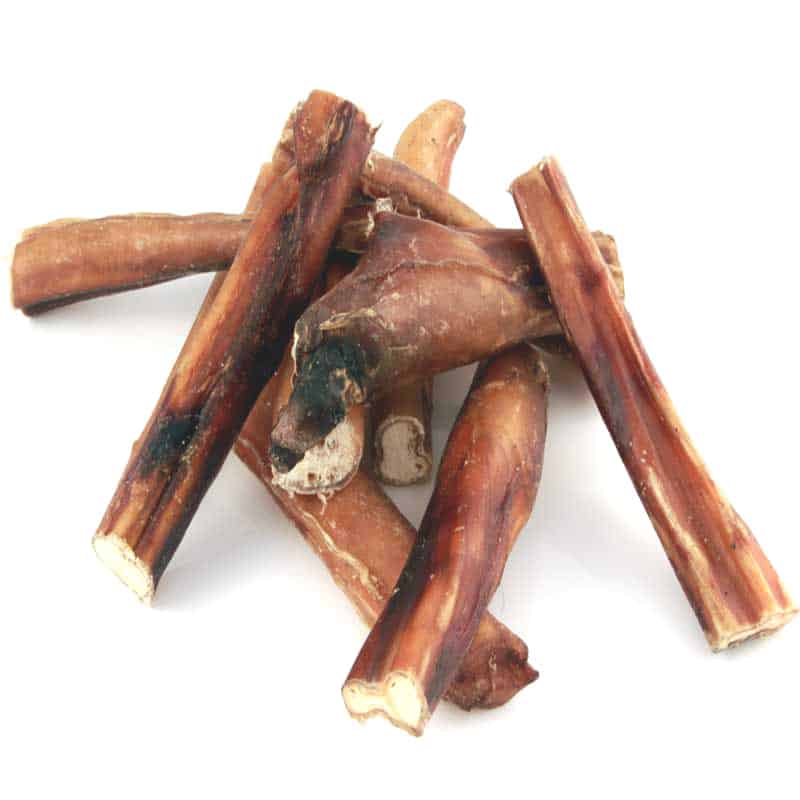
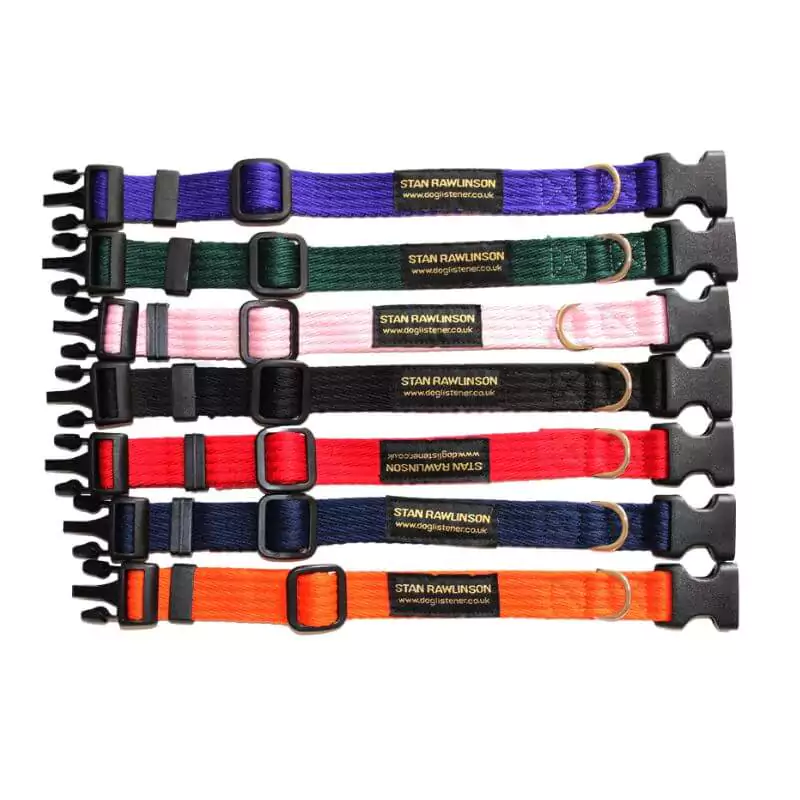


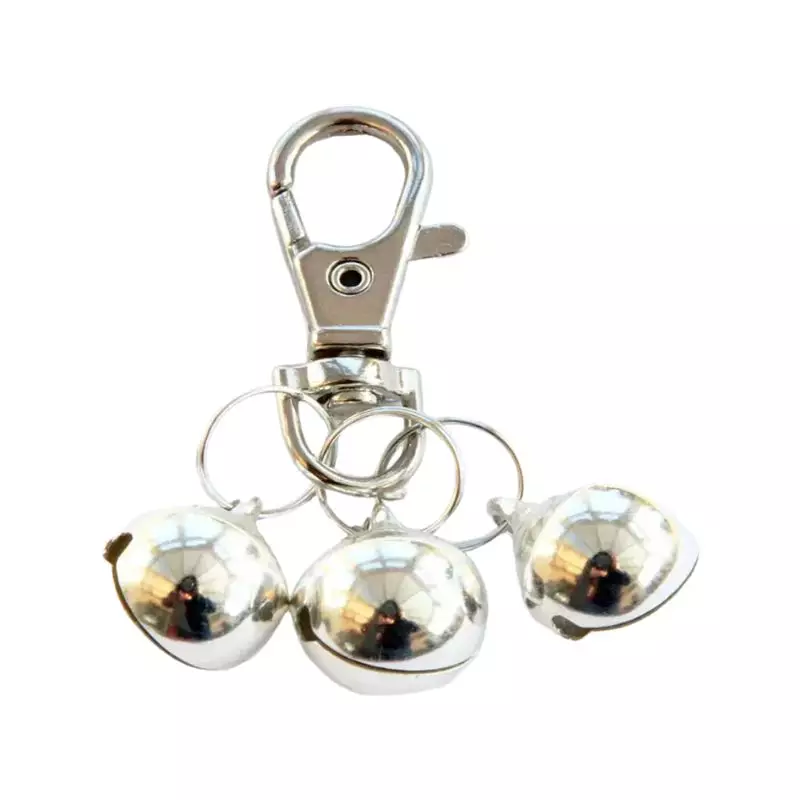
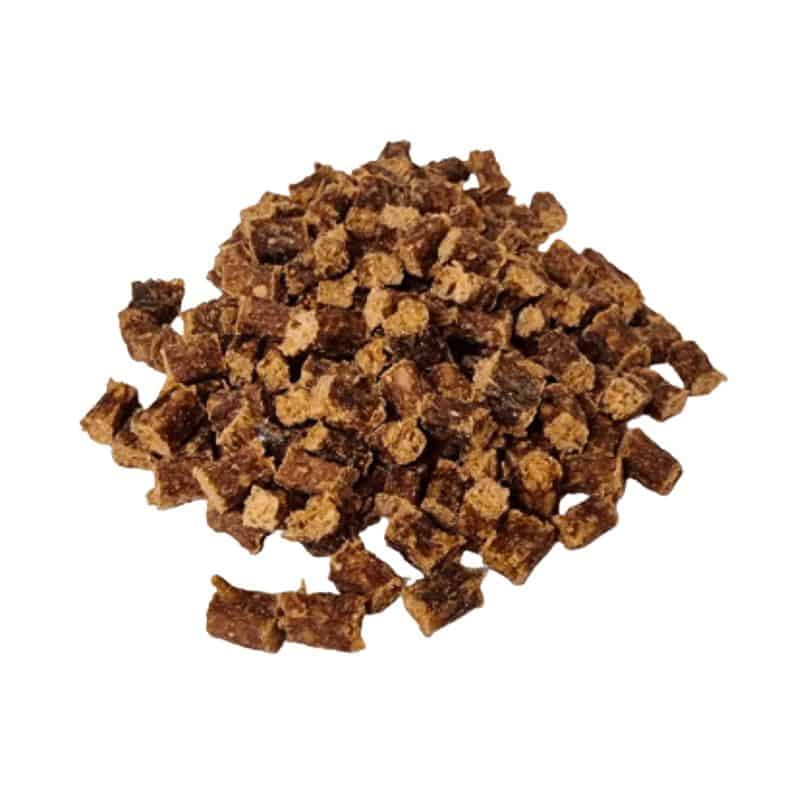
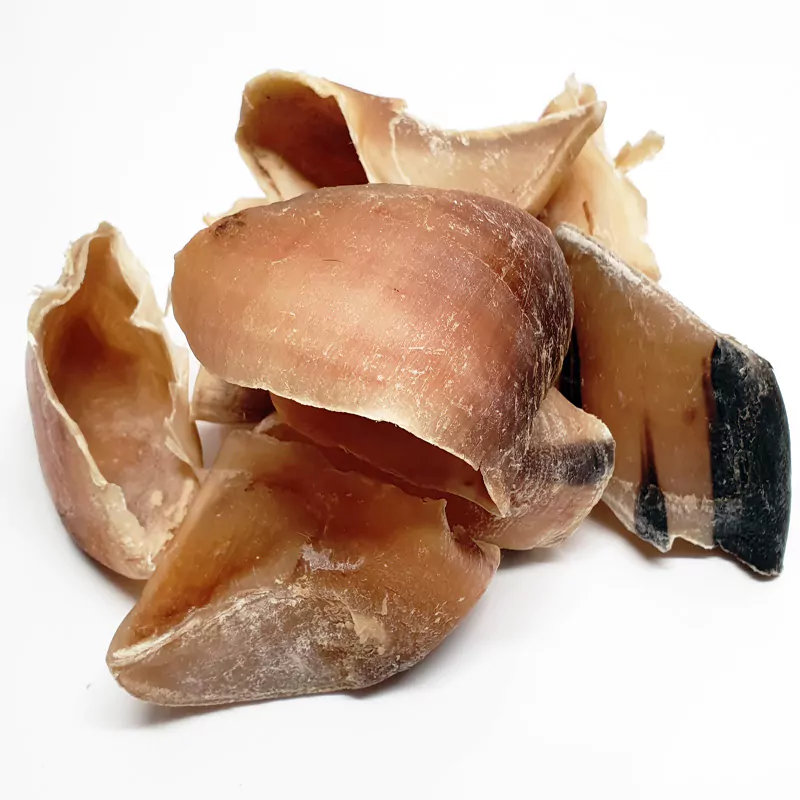

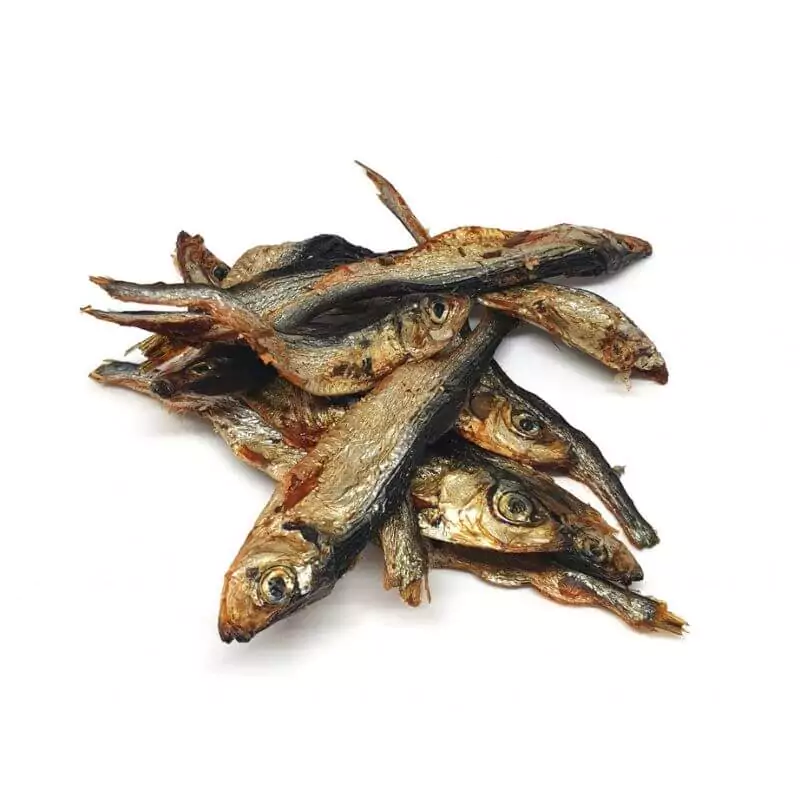

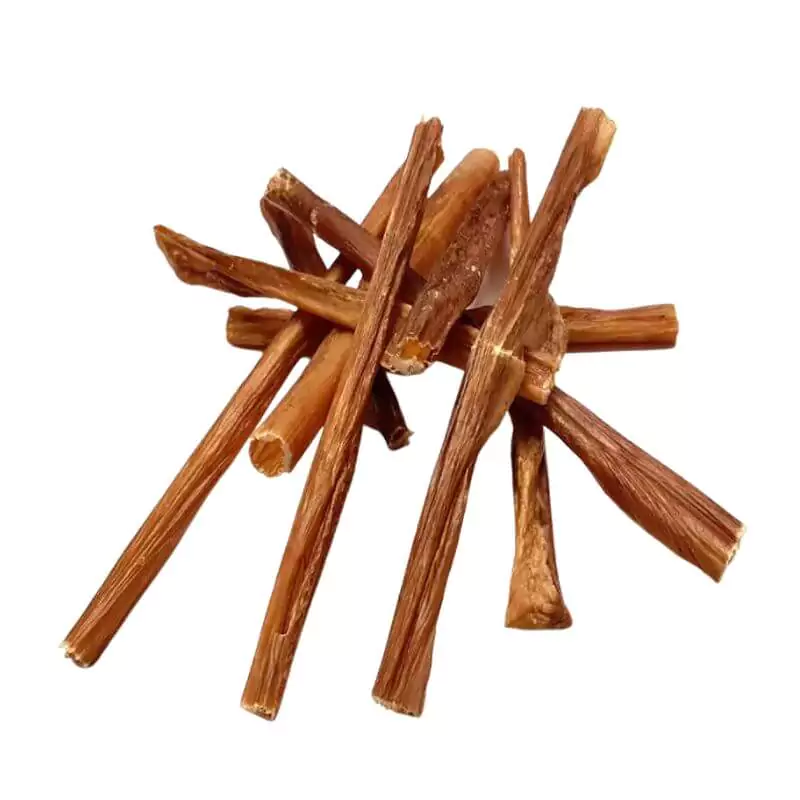
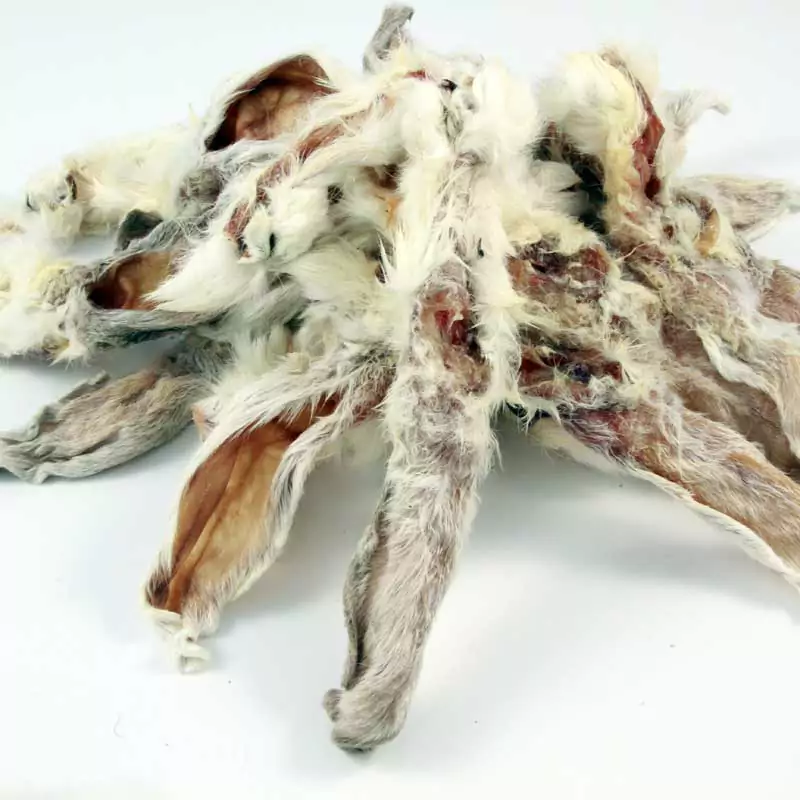
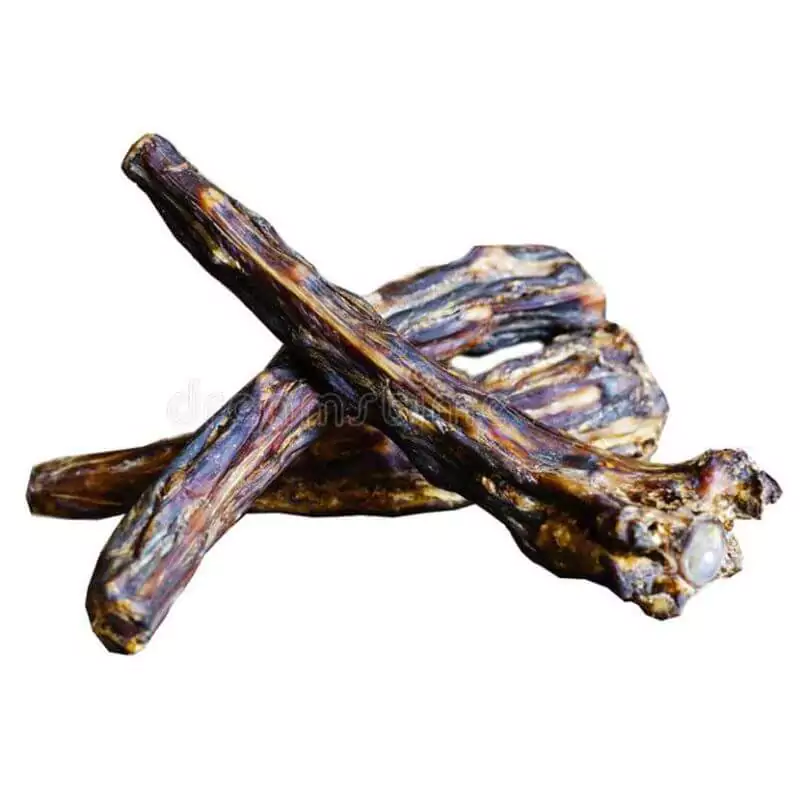

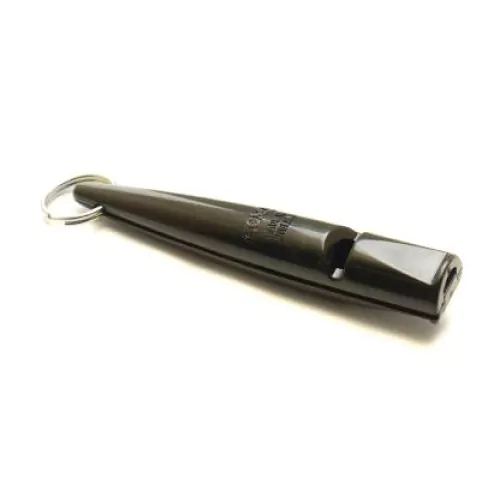


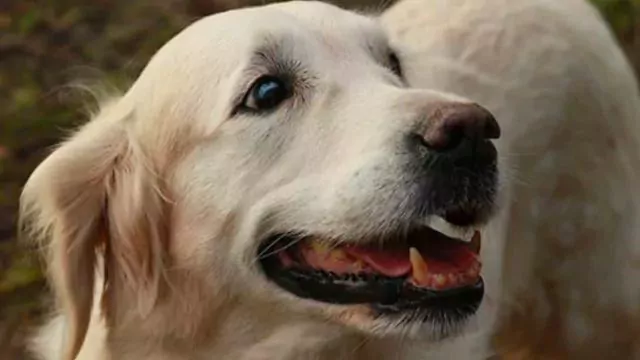



Comments (45)
I don’t want to spay my chihuahua but vet says I should
My little chihuahua Dolly is in the 3rd week of her first season and is 9 months and 1 week old. My vet saw her at around 6 months and was very pro spaying and basically told me it would be irresponsible of me not to have her spayed because it would prevent possibly fatal health issues later in life.
I told her that I was under the impression that dogs should be allowed to have their first season before being spayed and she said well in a dog this small I would advise if she hasn’t had a season by the time she is 8 months old to go ahead and get her spayed. I thought this seemed like bad advise and I really do not want to have her spayed it it isn’t necessary for her long term health.
I do not intend to breed from her, she is very tiny at only 3.5ibs , but I am more than happy to protect her from males whist in season for as long as needed. She has shown no adverse behaviors whilst in season, in fact if not for the physical signs you would never know as she has been her usual happy self throughout.
She has the most perfect temperament, she loves people, is confident happy and just a joy to have around, I am really worried that spaying would change her personality, not to mention my fears for her having an operation. We also have a male mini dachshund who we had neutered at around 8 months due to constant pestering from the vet…he does not cock his leg, he urinates everywhere when excited or stressed, he barks at everything, screams like he is being murdered when he sees his lead or when someone he really likes comes to visit, in short he is a neurotic nightmare, and having just read this article I wonder if it due to early neutering.
So my question is, am I being irresponsible if I don’t have Dolly spayed?
Spaying
My personal belief is the Vet is the irresponsible one. Recent research has shown that neutering can cause many physical changes in the dog. 20% of of female dogs spayed get incontinence. It is actually called spay incontinence. Recent research has shown that neutering increases aggression in dogs.
If your dog is healthy and has a good temperament, why would you want to tamper with nature Read my articles Overview neutering and in depth neutering.
I have two intact bitches at present and unless there is a good medical reason to neuter I will not do so.
Kind regards
Stan
neutering
I have a 7 month old Scotty, who is sweet tempered and socialized. He loves people and dogs. I want to wait till he is at least 12 months old to neuter him, and after reading the recent research, I may decide not to neuter him at all. However, he goes once a week to doggie day care and they say that although there is absolutely no problem with my dog, the “other dogs know he is not neutered” and they may cause problems. Have you had experience with this?
Same issue!!
For a monent i thought it was me who wrote the scottie comment., I am exactly on the same boat!!! I own a 15 month super social and docile scottie. That also goes to doggy day care once a week.. They are putting some much presure on my!! Since they do not allow unaltered males to play days.. But they have made an exception because I have been bringing mine since he was little.. Please help!! I have canceled three surgery apps already!! And i just made one for monday and don’t know what to do! The other scottie that I had died at 15 was neutered but he was agressive towards other dogs and gained weight.. Please advise on what to do!! I am afraid that as the article says it may alter his personality and may become agressive.. He is a perfect dog as he is now and always supervised and on leash.,! Thank you!
Doggy Day Care
Should have replied to this earlier, my apologies I forget to check the comments sometimes.
I am afraid Doggy Day Care are often run by amateurs that are brainwashed by the neuter everything that moves scenario. I have five dogs one is neutered and that was for medical reasons. If i go on holiday they go to my daughters day care and creche. She has 9 staff and often 70 dogs a day and there are no problems with the uneutered dogs.
The biggest problem is with the neutered dogs who are often aggressive, bad tempered and reactive to other dogs. Point your dog Walkers and Day Care people to the overview and in depth information on my website. The pitfalls of neutering have been hidden from us but fortunately i am now not a lone voice.
Many experts including Vets and biologists are finding that the Mantra we are told that neutering is the panacea for all dog related problems is a lie and is scientifically been shown to be the opposite.
Stan
Neutering and day care
It is about time the day carers got up to speed regarding the impact of neutering. Find a more enlightened daycare. It is a fact that neutering causes aggression in both male and female dogs. This was proved by in depth research done with 7600 dogs. In nearly every case the neutered dogs were more reactive and aggressive.
I have just finished an Overview of Neutering which is a far easier read than the in depth above. However it has some other information that you may find useful.
Thank you
How nice to read an article that doesn’t make me feel like a freak. I had a Jack Russell who I lost last year age 15.5, he was entire until he was nearly 14 when he developed a tumour that made one testicle grow and th either shrink. At this point I had him castrated on my vets advice as he believed if left it could cause prostrate problems. I never had behavioural issues with him and he was the happiest most well socialised dog you could ever get who came every where with me. He only objected to big dogs who tried to dominate him, these he would tell off, otherwise he was a star who came everywhere with me and whose prescence I will miss until my dying day. When he was 9 I adopted a 10 month old female parsons x on holiday who belonged to a friend of a friend. They said she was getting snappy with her toddler. It turned out she was coming into season for the first time. I separated her form my boy when he got too interested and then reunited them when she had gone over. I chatted with my vets about possible alternatives tonuetering as I felt it was a very big invasive operation for my very nervous and yet dominant girl. They really pushed neutering but I never felt happy about it as the only thing they kept repeating was it would prevent uterine cancer and pyometria. I asked about the signs of pyometria and decided to take the risk. Lottie is 8.5 now and still entire. She has developed in to a happy well adjusted sociable girl, who whilst still cautious of new people and not a lover of large groups of dogs is extremely well behaved in all situations and who will simply take herself to one side and sit down if dogs get too boisterous or too many in number when we are out on our walks. After we lost Ralphie a year ago I looked at various rescue centres with view to getting another companion for Lottie. To say I was vilified by nearly all of them is an understatement. One girl accused me exposing my dog to anyone who wanted to steal her and use her as a breeding machine and predicted she would develop pyometria and die. I was told any neutered dog would attack her and basically made to feel like I was the worst owner possible. All this despite having rescued/ rehomed two entire dogs and never breed from them, having rehomed over 20 cats in the last 20 years and having rehomed three horses, two of whom and now enjoying a very long and happy retirement with me. I have never been comfortable with the idea of neutering for the sake of it, just as I am not a fan of breeding for the sake of it. I am a responsible owner and I would like to be treated as such. So thank you for putting forward an argument against neutering because that’s what you should do. I will continue to keep my dogs entire unless they have a medical condition which dictates otherwise.
The Veterinary and Rescue Gestapo
Well done Michaela for standing up to to the rescue centre idiots who know next to nothing about the dogs they claim to support and rescue. They certainly know nothing whatsoever about the three hormones removed by neutering.
The vets know very little about the effects that neutering has on the behaviour and health of the dogs they subject to this major operation. Read my article Overview Neutering. It has information on a vet that was horrified by the health problems she had caused her clients by paediatric neutering. Also the in depth research on 7552 dogs, by a large veterinary teaching hospital in America that showed that neutering in most cases increased aggression and reactivity rather than the falsehoods spouted by the so called experts.
That is what worries me about so called experts the dog forums are full of theses neo nazis that are intent on neutering any dog that breathes. The have no experience or knowledge on the results of these invasive and often needless operations>
By all means neuter the right dogs at the right time for the right reasons. This blanket neutering of all dogs is ludicrous and ill thought through by fanatical do-gooders that do far more harm, than any good they imagine they do.
Suprelorin
I have an 18 month intact Dalmatian boy and I am currently considering using suprelorin to see if it has any affect on his “teenage” behaviour. He is a beautiful loving boy at home but has been reactive with other dogs since about the age of 9 months which I have related to his male hormones kicking in. I attend reactive dog classes to assist me with handling his behaviour but he is showing no signs of improvement. I am now considering suprelorinas a way of assisting during this phase and helping to imprint a more calm behavioural response with a view to see how he comes out the other side when the implant wears off. I do also have 2 intact bitches and he is a perfect gentleman with them, I just separate during the re entice times of their seasons. Have you used this in your practice and what are your views? Many thanks in advance, Michelle.
Suprelorin
I have both used suprelorin and recommended it to many people. It is very effective and will indicate if your dog is hormonally aggressive. The majority of aggression is fear based and many people mistake this for hormonal aggression. If you dog has problems with just male uncastrated dogs then it is probably hormonal and therefore testosterone driven. Castration will help in this case. If your dog is aggressive to male , female and castrated dogs it is probably anxiety/fear related and neutering will almost certainly make it worse. Stan
Have sibling pups – how do I NOT neuter?
Greetings Stan,
I really appreciated your article on neutering, but I have two 7 mo old Mastadors from the same litter (male and female) and wonder if I even have any true options other than separating them, which seems cruel and might not even be possible. The female is constantly licking his genitals and trying to mount the male (mounting seemingly more in a dominance display than a request for mating) but he seems to have little interest in her sexually and has never mounted her once. I am looking for alternatives – the suprelorin is soomething I will look into, but don’t favor due to the lack of data with something so new. What do you advise owners with puppy siblings? I can’t imagine being able to wait until they are mature enough – 1 or 2 years seems like an eternity with fast growing pups. They are both beautiful, healthy, well socialized pups; he looks like his Mastiff mom, and she looks like her Lab dad. I don’t want them to breed, obviously, but am desperate for answers. Help! :)
Sandy B
Neutering siblings
Sorry for the delay in answering. You really need to read my article Siblings the Worst of Both Worlds.
You also need to read my overview article on neutering, where I explain that you can have a hysterectomy or a vasectomy which sterilises the dogs but does not remove the vital hormones. These articles are here. https://www.doglistener.co.uk/choosing/sibling-litter-puppies.shtml
https://www.doglistener.co.uk/overview-problems-spaying-and-castrating-dogs
Stan
Tubal Ligation and Vasectomy
Hi there,
I Have been doing lots of reading up on this topic in order to make the right decision for my male and female 18 month old pups. After having three bitches all of whom lived to 16 and 17 plus (one still with us) I am firmly convinced not having them spayed has played huge part in their longevity. I had therefore decided I would like to go down the Vasectomy and Tubal ligation route. Unfortunately my vet will not perform these operations. My question is does anyone know of a vet who is prepared to perform these procedures in the U.K.
Many thanks
Same situation, same question, still have concerns
I have the same exact situation and question. I have just read the siblings best of both world and I’m choosing option 2. I’ve come to peace with the responsibility. I wanted to know if it’s ok or healthy for them to be around each other if they both are not castrated. (Separated and supervised when female is in heat)
Suprelorin
Hi Stan,
I have a year old male that has resource guarding issues and has also gone for my husband and I on a couple of occasions. Not biting but quite forceful. He seems a very strong willed dog and I will admit that we did not train him sufficiently when we first had him. Regretting that now. We are going through some intensive training now including using your website and your Jingler. What I wanted to ask is your opinion on Suprelorin and its use on this type of behaviour. It has been suggested to me that we should try it to calm this behaviour for a few months whilst we are training him. I am not confident that it would have the desired effect ,as I am not sure if he is fear aggressive or “dominant” aggressive,, and could it make him worse. He is very good with all dogs outside the home, but on occasions he has warned off my other entire male. I do not want to surgically castrate him for several reasons. He is still very young and would this have a lasting effect on him?
Suprelorin
Hi
You haven’t mentioned what the breed is and what age. Is it by any chance a solid colour cocker spaniel? I think you are describing Possession Aggression Object Guarding. Type that term into Google and will be the first one up.
Any dog can suffer from it however Cockers come top of the list. If it is that then neutering or suprelorin will make it worse. Why? Simple because it is fear based, Therefore taking away the vital hormones will cause it to escalate. Read the article and it will give you a clearer view of what may be happening.
Neutering a male dog
I have been told by a vet that if you don’t neuter a male dog it remains in constant need to mate and to find a bitch and will be sexually frustrated. I don’t have any reason to neuter my dog other than being told this. Can you advise please?
Many thanks
Samantha Bowen
Standard Vet Fear Tactic
This is a monetary fear tactic. I asked fifteen vets recently about neutering without removing the hormones. Not one knew how to do it. They are totally ignorant of the Alternatives as they are not trained to understand what the benefits of the vital hormones they are removing. Shocking state of affairs and all based on the god of profit.
Attitudes of other dogs to an intact male
I’ve been reluctant to neuter my dog for many of the reasons mentioned in this article. However, some people complain to me that their own dog is aggressive to intact males. The last time was from someone who neutered her dog at six months! Is there any truth in this? I hope we haven’t neutered to the point that dogs find the smell of testosterone unusual and react towards it. If so the problem is self fulfilling and we have a double whammy for the responsible owner. Whilst there’s little doubt about the risks of neutering immature males are there any risks in neutering mature dogs. In other words have any studies compared adult intact with adult neutered with respect to health and behaviour?
College of Veterinary
College of Veterinary Medicine; University of Minnesota They have done in-depth research to try and prove that neutering was good for dogs. They were totally shocked by the findings. The neutered dogs were far more aggressive, reactive and badly behaved. The non-neutered dogs in this research were calmer and far less reactive and aggressive.
I am so glad I read this
Just recently my dog sitter who has a very reputable boarding kennels, suggested I have my 2 5 year old labradors neutered, why I asked, they have the Suprelorin each year and they are absolutely fine around other dogs including females on heat. Oh, it’ll just save you a lot of money she says and it’s not as if you don’t know what their behavior will be as they have the implant but also it will help with their health later on in life. From what I’ve read and I’m so glad and thankful I did read all these articles, sounds to me I’m doing the right thing by keeping them intact.
spaying my 22 month old dog
I have a small 22 month old female dog.We live in Canada. She is a mix of yorkie/chihuahua/maltese/ shih tzu. She is in her 3rd heat currently on her second week.Her first heat was at 7months old and second heat was at 14 months. She is a pretty good dog.She is happy mostly. When I got her at 3 months she growled a little at some dogs and I got her out of that . She is friendly with people and dogs but around near her first year birthday she begin growling at dogs more. I went to the vet and asked them how should I get her out of this behavior. She would growl and bark at dogs wildly. They said to give her treats as we passed dogs and distract her and keep on doing this until it works. It worked some what but not fully. She somedays will be great and not growl and go wild at dogs . At times she will lay down sometimes when see a dog and want to play with them and then when I let her interact with the dog she will sometimes growl wildly and bark and so it is very frustrating.When we go for a walk and we cross at the lights a lot of times if a dog is crossing from the opposite side she will growl and bark wildly. And although she does this a lot growling and barking at dogs sometimes she will pass 2 or 3 dogs and growl at each one of them and then after that she will pass other dogs and not even growl. So today when I came home from work I took her out and there was a big dog behind us and she loves big dogs .He came up to her and she looked like she was going to be friendly and then she started growling and barking wild. When finished growling and he was smelling a pole she was smelling him and being ok.Then shortly after that we passed two dogs and she growled at them. I tell her stop it and she usually does but I don’t know if it is because she is in heat that she seems to be more upset and growls more and doesn’t stop as much. When we passed the third dog that she growled at I picked her up usually that makes her stop quickly . She did stop but it was longer than usual. I was wondering if I get her spayed would it help her not growl as much?I really don’t know what to do as I know dogs when they know what you want they do it. And usually with my dog she is good at picking up how I want her to behave and does so. It is only with this behavior that I have trouble with her. I must be doing something wrong but I can not figure what it is. Do you have any suggestions? If I got her spayed would her behavior with the growling stop?
Thanks
Paula
spaying your 22 month old dog
The problem is not hormonal it is a lack of socialisation in the first 16 weeks of this dog’s life. Without interaction with other puppies during the canine socialisation period 0-16 weeks many dogs will be unable to give off the correct body language and responses, therefore, it results in fear aggression. Neutering a fear aggressive dog will make it worse.
Socialising your puppy with just adult dog is of no use it must be puppies of a similar age that is why puppy classes are an absolute must.
Suprelorin
Hi we have a 4 year old Springer Spaniel. I was about to get him neutered as he has some aggressive tendancies and the vet phoned at the last minute to say she’d noticed him cowering when they went near him and if he was a fearful dog the neutering could make him worse. So we asked her to stop. I would never have said he was fearful though. He is only usually aggressive with other intact males. Although he does do some Gun work in shooting season and apparently he’s absolutely fine with all the other dogs, but keeps himself to himself. At his worst I have seen him bare his teeth, growl and really go for this other in tact male (incidently another Springer). The only other behavioural issue is he can growl at any of the family if we try and touch where he doesn’t want you to. If it’s his decision he’s fine but recently he had a tick on his inner hind leg and wouldn’t let me near it. So I’m wondering whether the implant Suprelorin will help decide whether neutering is the way to go.
Thanks. Sam
I would definitely try him on
I would definitely try him on either Suprelorin or Tardak. Tardak lasts only a few weeks but will indicate whether neutering will be the right way of going about what sounds like hormonal aggression. You have a very rare commodity a vet that is honest.
4 year old Visla
I think Suprelorin or Tardak which last for only six weeks against the 6 months plus of Suprelorin will indicate whether this will end the humping. However, if it doesn’t you will need to look at behavioural intervention often humping is a learned behaviour and can be stopped with the correct intervention.
Spaying 11 year old Labradoodle
To spay or not to spay – the continuing dilemma! Every yearly check brings up this debate. It is recommended to prevent the “1 in 4” chance of pyo which I know is a terrible threat to life. What are your thoughts on this? She is healthy with a wonderful temperament. My other girl is a 10 year old westie/russle x. The vet recommended spaying at 6 weeks!!! Made me feel like I was giving her a death sentence by not agreeing to it. She too is healthy and full of energy. I’m struggling to find information on how spaying affects older dogs.
Spaying an Older Dog
There is more of an argument regarding spaying an older female dog that neutering a male dog. I would question the figures the Vets throw out regarding Pyometra I do not believe it is anywhere near 1 in 4. However, I am aware that it is a risk. My only concern would be putting them through quite a big operation with all the dangers that entails, especially for a dog of this age.
It is a difficult one and one I have considered myself I still haven’t made the decision either way. I know neutering can change temperaments and behaviour but not always. I am erring on the side that if I believed the time has come that the seasons were having a detrimental effect on her then I may have her done she is very fit and a working gundog.
Neutered dogs live longer?
I have read that neutered dogs live longer because their hormones slowly poison them and this is also the reason human males die younger than females. Is this true? Also I am getting a male puppy soon and my daughter has 2 female dogs. I was going to neuter my dog but now I am worried. What would you do?
Neutered Dogs live Longer
Unbelievable?. So removing vital hormones makes dogs live longer?
Why are the hormone there in the first place i think you should read the article? I think you should have also looked at this

Suprelorin
We have a 22 month old intact GSD male that was getting very domineering of smaller dogs, and not answering recalls when other animals were nearby. He’s not biting, just knocking them down to stop them getting away when they try to run, then standing over them.
We decided to try him with Suprelorin! Now after around 5 weeks he seems to have a little less interest in chasing other dogs and answers recall a little better, so that’s good! but we’ve noticed his stools are very, very soft, where as before they were mostly firm and fibrous. There are no other ill effects, just extremely soft stools! Pro-Biotics, which previously fixed this issue, no longer seem to work either.
Would you think this could be a side-effect of the implant?
I am not sure you have read the nfull article
I am not sure you have read the long-term side effects. If not look at the overview of Neutering. It is shorter and more succinct.
Overview Neutering
Need Advice
One of my GSD’s ball has not dropped and cannot be felt, so neutering is vital. My worry is he shows fear aggression on occasion to random people. There is no deciding factor I can pin point as to why, they are always without a dog – another dog means my shep in fixated on play. He is great with other dogs and if they tell him off runs away rather than becoming aggressive.
I am worried that his fear aggression will become worse on neutering. GSD’s are sensitive and need loads of socialisation to everything to become confident adults. I got him as an older pup and spent time building his confidence, he meets lots of different people, but like I said still reacts sometimes. When I first got him he showed fear reactions to many things – including park benches, all which he is fine with now. At present he is 14months and any advice about what I should do before neutering / how long to wait would be a great help.
Need advice
My advice is very simple do not neuter him as it will definitely make the problem worse. However, if you are not convinced then try Tardal a short-term emasculation and see what happens within about six weeks.
Many thanks.
Further to our telephone conversation, I would like to thank you for your time and advice. It’s nice to know there are people out there who truly appreciate dogs. I have owned my first dog for nearly 2 years and I can say from personal experience most of the so called professionals, vets, trainers are getting it VERY wrong. I have done alot of reaserch and was horrified by what most vets were advising. Most well meaning owners are being mislead and badly advised by the conventional veterinary practices, myself included. I eventually found a vet down Oxford Dr Christopher Day who I can say is the best vet I have ever seen. He confirmed everything I had reaserched and alot more besides. God bless and all the best.
Unsure whether to Neuture my Dachund
Hi , I have a 16 month old male miniature dachshund. I’ve been trying to decide what is best for him. Originally was not going to get him neutered as he is a happy little chap and can be a bit nervous. He is not aggressive but does have an issue with marking. More at other peoples houses rather than my own, i know this breed can be hard to house train but this appears to be definite marking as opposed to little mistakes. Only sexual behaviour he shows is to a stuffed toy. I have spoken to 2 vets, one said yes definitely do it for health benefits and the other advised it was 50/50 as it can cause weight gain especially in this breed that can be more of a health risk . After much research, I think I have decided not to go ahead but would appreciate any advice or tips on how to stop marking. I understand neutering may / may not help.thanks
Unsure whether to Neuter my Dachshund
The problem with neutering is if he is nervous and reactive it will probably have a far more negative effect if you neutered him than a confident dog. However, you are having a problem with marking if you can catch him doing it you can stop him. The problem is often catching the dog he probably does it behind your back. Weight gain is a problem, neutering slows the metabolism down so that weight gain is almost inevitable. Why don’t you ask your vet for a Tardak injection which is a temporary castration lasting with a small dog about 6 weeks? If there is an improvement on the marking and his anxiety does not increase then you can make a more informed decision.
Need advice
My GSP/Labrador cross is 17 months old and has a undescended testicle and my vet says he needs to be castrated to prevent future issues. What is your view on the need for him to be castrated and is there a urgency to do so or would it be ok to leave s little longer until he is older. What age would you say they fully mature?
Undescended Testicle
If one testicle is retained and the other one has dropped then just have the undescended testicle removed, that will allow the dog to keep all of his hormones as the descended testicle will produce this on its own.
Need advice
My GSP/Labrador cross is 17 months old and has a undescended testicle and my vet says he needs to be castrated to prevent future issues. What is your view on the need for him to be castrated and is there a urgency to do so or would it be ok to leave s little longer until he is older. What age would you say they fully mature?
Phantom pregnancy
My 10 year old Cairnoodle has had 2 phantom pregnancy and my vet says she needs spaying but I don’t want her to be put under anaesthetic if the phantom pregnancies are not harming her, what is your opinion on this? Jayne
Tubal ligation vet
We live in the UK and are adopting a female breeding dog. The breeder does not need her anymore. We are not intending in breeding from her, but the requirement for taking her is that she is spayed. We’d rather keep her natural and be careful/responsible during her cycle (i.e. keep her on the lead during that period). But according to the breeder we must have her operated. Are there any vets in the UK that can do tubal litigation? Or even vets in Europe? Please let me know as I am lost.
Tubal Ligation
I am having a very difficult job finding any Vet that has a modern approach to sterilisation. The UK is way behind America and parts of Europe and I am now going to write to the BVA. and the Vets controlling body If I do get a list I will publish it,
Phantom Pregnancies
The problem with phantom pregnancies in later life is they can cause mammary tumours and I would consider asking your Vet if they did laparoscopic neutering
A laparoscopic spay or neuter is an alternative to the traditional method. It is less invasive and allows faster recovery time.
In a laparoscopic spay, your female dog will have her ovaries removed with a camera and vessel sealing device through a keyhole incision (ovariectomy.
Suprelorin
Thanks for your articles, interesting and informative reading. You mention you have 6 intact dogs 3 of each male and female. How do you manage this? Do you move your male dogs to another location for the duration of the fertile period of your females season?
In the instance of it being logistically difficult to keep male and female apart for 2-3 weeks what would your best recommendation be? I have an intact male and a female puppy, we don’t want to breed but since researching more on the topic I’m not sure of the best option to take?
What are your thoughts on the use of suprelorin on my slightly anxious male dog to allow my girl puppy to reach maturity prior to then spaying her? I can’t predict exactly when her first season would be but expect that it would occur within the 6 month period suprelorin is effective. I definitely want her to reach 12 months before spaying but note you recommend two seasons, is there a specific difference if the dog has reached maturity?
I’m keen to explore vasectomy and hysterectomy but am not sure this would be a viable option for me as they may still attempt to breed and be at potential risk of injury and I would still then have the logistical difficulty of keeping them apart.
Any suggestions would be greatly recieved as vet was pushing for neutering both.
Comments are closed.